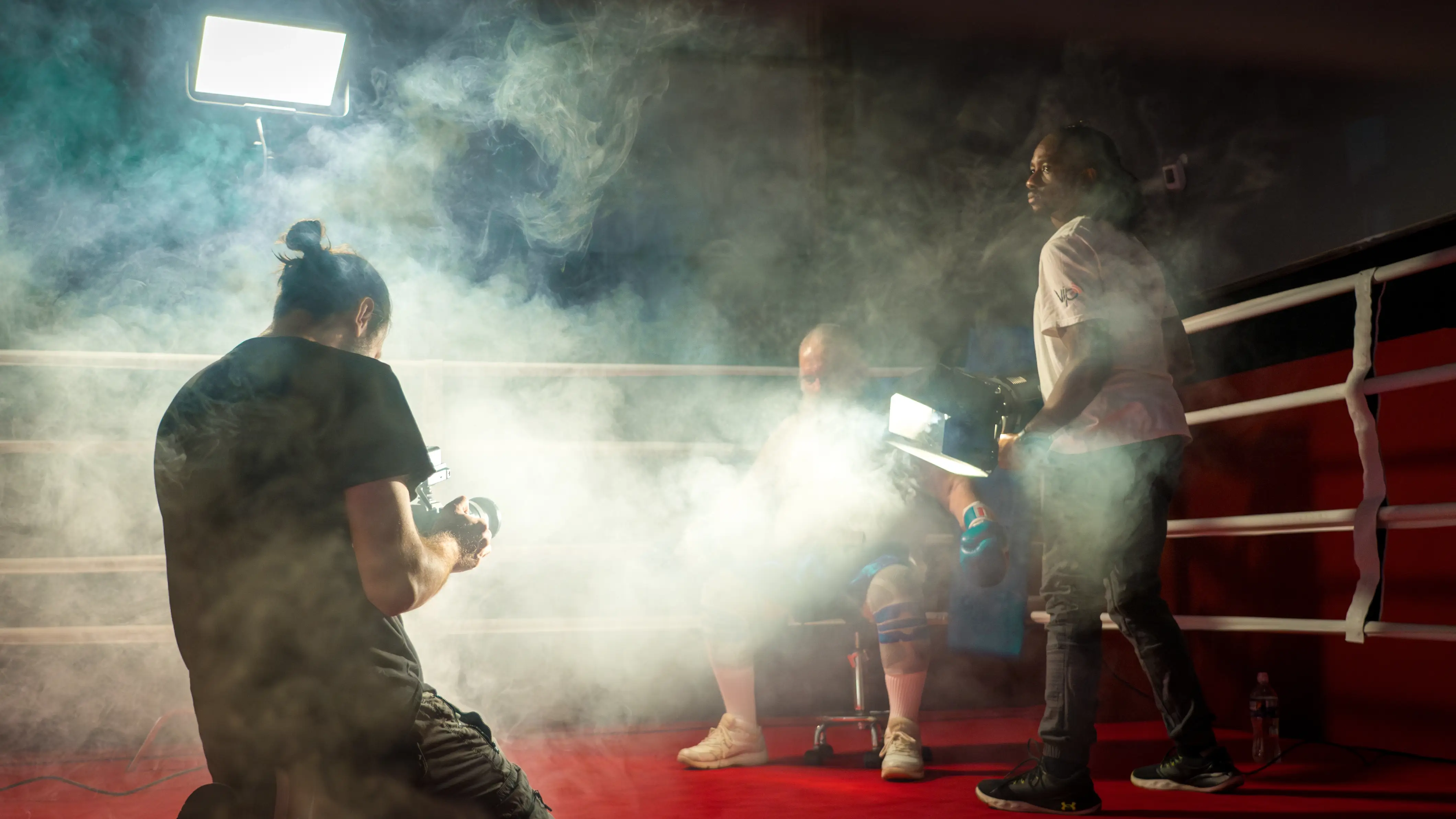Video production is a powerful tool for communication, storytelling, and information sharing. Effective video content can drive engagement, convey complex messages, and reach a wide audience. This blog will walk you through the entire process so you can begin creating your own high-quality videos!
What is Video Production?
Video production is the process of creating video content. This process involves many steps, from the initial idea all the way to sharing your video with the world. The goal is to create a polished final product that resonates with your audience. Production may also refer specifically to the step of filming your video, but more commonly, video production refers to the entire process.
The Three Stages of Video Production
There are three main stages in the video production process: pre-production, production, and post-production.
1. Pre-Production
Pre-production is the planning stage of video production. This step is all about getting ready for your video shoot. It ensures that everyone involved in the project has a solid plan and the resources to effectively execute the project.
Pre-production includes the following:
Planning and Conceptualization:
-
- Identify your video's purpose. Decide why you're making this video and what you want viewers to take away from it. Consider what stage of the marketing funnel this video serves. For example, are you trying to increase awareness of your brand, educate consumers, or persuade them to purchase a product?
- Define your target audience. Who are you making this video for? You should know their age, gender, and location. More importantly, you should know what problems they face, what their interests are, and who influences them.
- Develop your core message. What do you want your audience to do after watching your video? This will help you determine the core message of your video. For instance, do you want them to click on a link, buy your product, or subscribe to your channel?
- Brainstorm video ideas. Get all your ideas out on the table! Make sure they align with your video's purpose and target audience. You can draw inspiration from other videos online and from competitors.
- Assess your available resources. Consider what personnel, equipment, and expertise you have available. Determine if you will need to hire a production company or freelancers.
- Establish a budget and timeline. How much money do you have to spend on this video? How much time do you have?
-
Script Writing:
Write a detailed script for your video. Think about the actors who will read the script and try to write in their voice. Make sure the script is engaging and written in easy-to-understand language for your target audience. -
Storyboarding:
Create a storyboard to visualize how your video will be shot. The storyboard should detail the lighting, coloring, and framing of each shot. You can use screenshots and images from other videos for reference. -
Logistics:
- Scout locations. Choose locations that suit the needs of your video. Secure permission to film at specific locations, if needed.
- Determine what video equipment you need. Refer to your storyboard and shot list to determine if you need any additional equipment, such as extra lighting, a generator, or a computer.
- Cast talent. If you need on-screen talent or voiceover artists, consider who will be the best fit for your video. You may need to host auditions for talent.
- Schedule the shoot. Create a schedule based on the locations, distance between locations, and availability of talent. Make sure you have all crew, equipment, and permissions secured in advance.
2. Production
Production is the phase in which your video is filmed. This phase may require a director to oversee the performance of talent, ensure all shots are captured, and confirm correct lighting and framing.
Production includes the following:
- Directing: The director oversees the shoot to make sure it aligns with the creative vision.
- Cinematography: A cinematographer oversees the camera crew and makes decisions about the visuals.
- Lighting and Sound: It is important to have good lighting and sound to capture high-quality video. Natural light is best, if possible.
- Filming: Capture all of the necessary footage, as well as B-roll footage.
- Equipment Handling: It is important to handle the equipment efficiently to ensure a smooth production.
3. Post-Production
Post-Production involves taking the raw footage and editing it to create a polished video.
Post-Production includes the following:
- Video Editing: This is where you compile and arrange the best takes from your footage. You can also add transitions and effects.
- Graphics and Special Effects: Add special effects and graphics, as needed, to enhance the visual appeal of your video.
- Music and Voiceover: Record any voiceover, if needed, and add music to your video. The music and voiceover should complement the video and reinforce your message.
- Coloring: This step involves adjusting the colors and brightness of your video to create a consistent look.
- Quality Assurance: Scrutinize the video for any errors.
- Optimization and Distribution:
- Render the video in the appropriate format for your chosen platform.
- Distribute and promote your video by sharing it on social media, embedding it in an article, sending it out in a newsletter, and more!
Equipment Needed for Video Production
You will need some equipment to get started with video production.
- Camera: This is the most important piece of equipment, and its quality will directly impact the quality of your footage.
- Lens: Lenses influence the depth of field and composition of your shots.
- Tripod: A tripod is essential to keep your camera steady, which is especially important when shooting stationary shots.
- Gimbal: Gimbals are used to stabilize cameras when they are in motion.
- Slider: Sliders allow for smooth and controlled horizontal camera movements.
- Microphone: A microphone is needed to clearly capture audio.
- Lighting: Lighting is essential to creating the mood and aesthetic of your video. If you don't have natural light, you will need a lighting kit.
Types of Video Content
There are many different types of video content. Some of the most common types include:
- Product Videos: These videos showcase the features and benefits of a product. They can be used to increase sales.
- Testimonial Videos: These videos feature customers sharing their positive experiences with a product. They can be used to build trust and credibility with potential customers.
- Unboxing Videos: These videos show the process of opening and revealing the contents of a product. They can be used to generate excitement for a new product.
- Corporate Videos: These videos are used to communicate a company's brand, values, and ethos. They can be used to build relationships with potential customers and employees.
The Latest Innovations in Video Production
- Technological Advancements: The technology used in video production is constantly evolving. Cameras are becoming more powerful and editing software is becoming more accessible.
- Virtual Reality and Interactive Media: VR technology offers new opportunities for creating interactive and immersive video content.
- Sustainability: The industry is also becoming more sustainable. There is a growing focus on using energy-efficient practices and digital sets to decrease the carbon footprint of video production.
Should You Outsource Your Video Production?
Creating high-quality videos requires a lot of expertise and specialized equipment. For this reason, you may want to consider outsourcing your video production to a professional production company. This will give you access to experts in all stages of video production, from pre-production to post-production. Video production companies also have access to high-quality equipment. In addition, they are very efficient and can often complete video projects quickly. However, keep in mind that outsourcing to a video production company may be more expensive than doing it yourself or hiring freelancers.
If you choose to handle your video production in-house or to hire freelancers, be aware of the drawbacks. Freelancers may not have access to the best equipment. In addition, it can be time-consuming to find and manage multiple freelancers for your video project. A DIY approach will require you to purchase equipment, which can be expensive. Also, you will need to invest time in learning the necessary skills to produce a high-quality video.
Ultimately, whether or not to outsource video production depends on your budget, timeline, and goals. However, if you are serious about creating high-quality videos, hiring a professional production company may be your best option.
Start Creating!
Video production is a challenging but rewarding process. By following the steps outlined in this guide, you can create high-quality videos that will engage your audience. Remember to plan carefully, invest in the right equipment, and be creative. With a little effort, you can produce videos that will help you achieve your goals!













